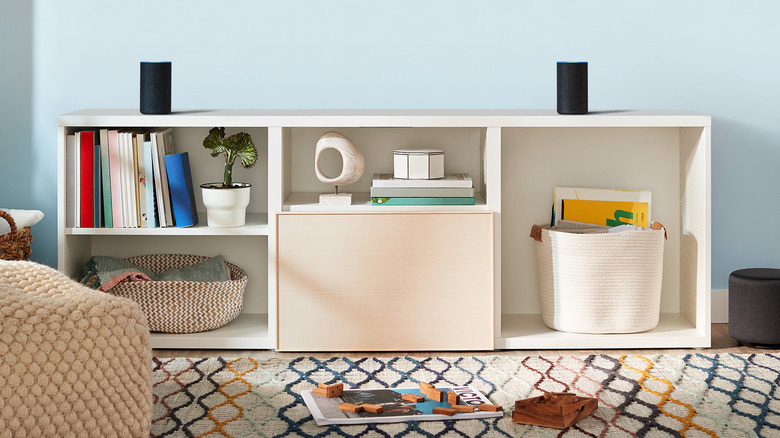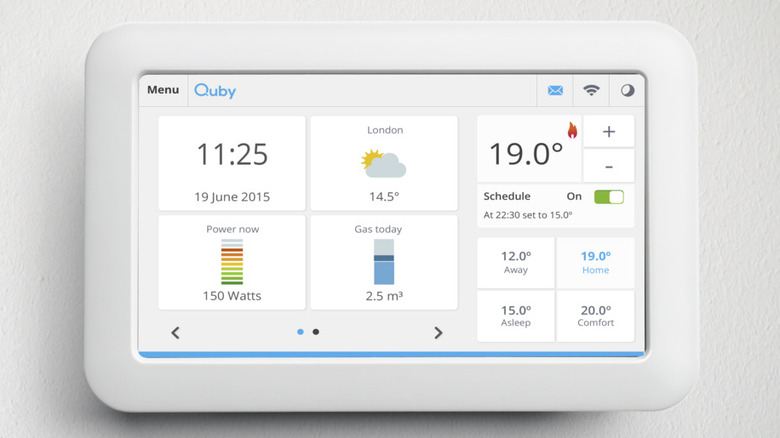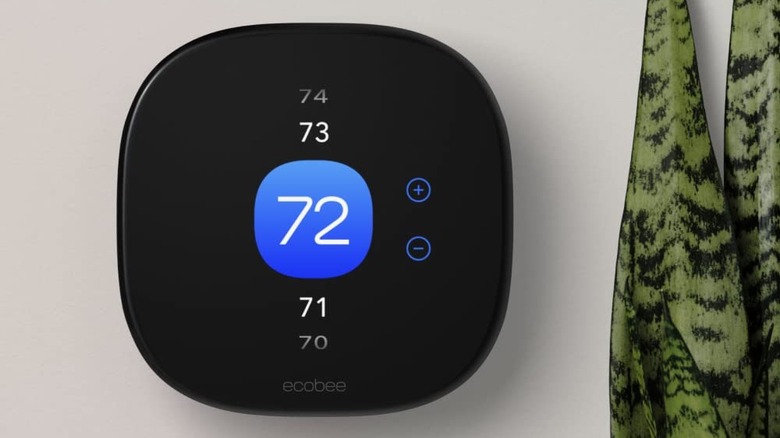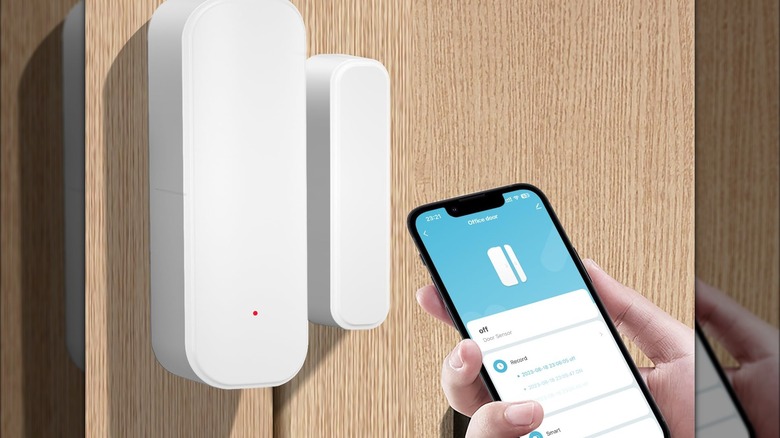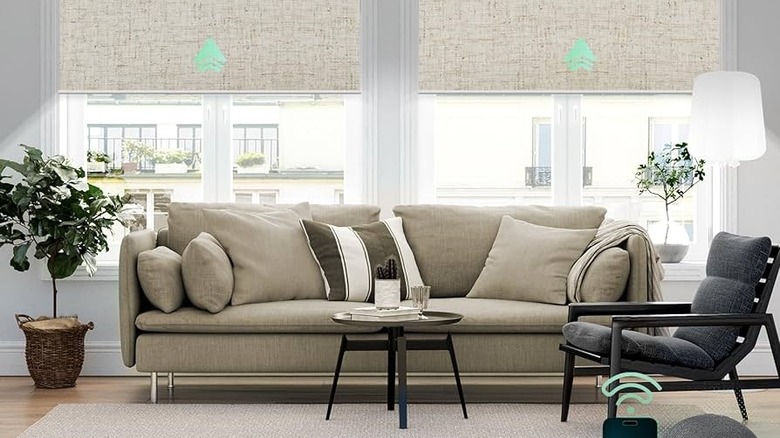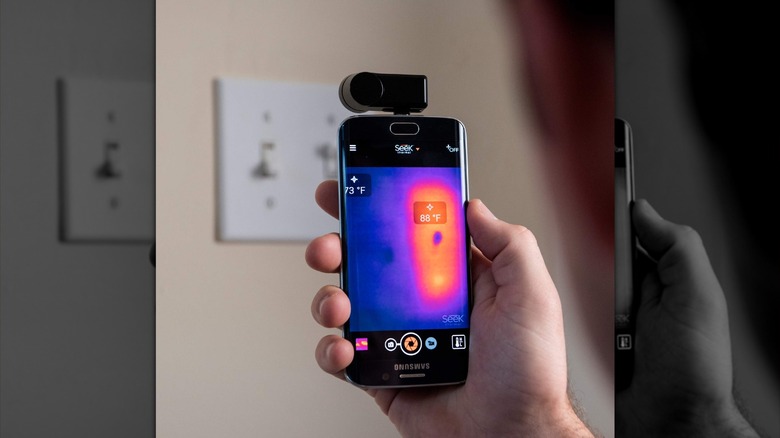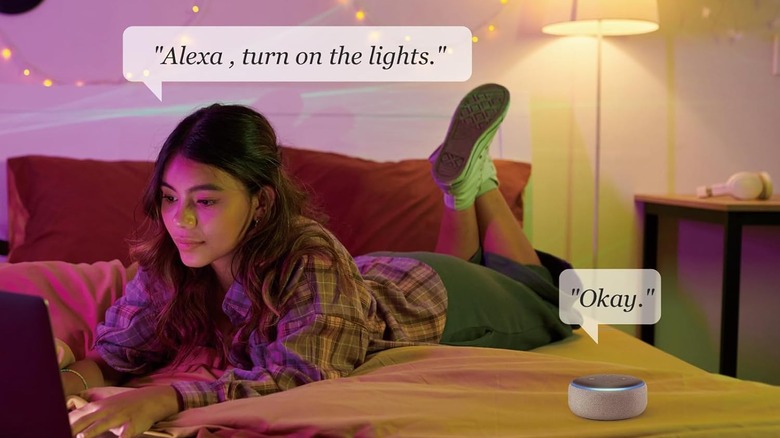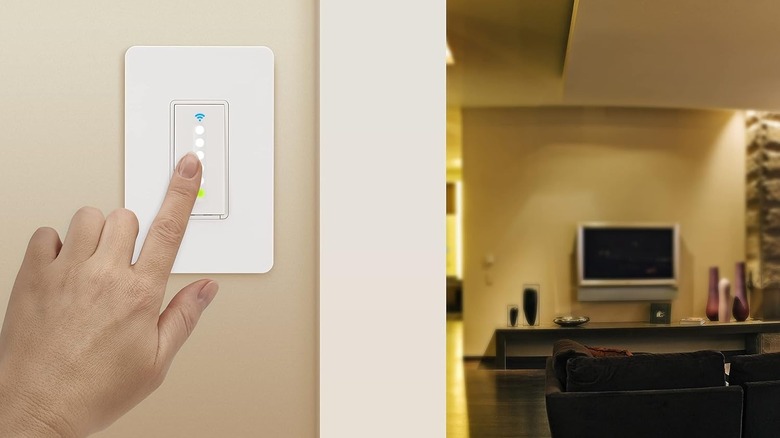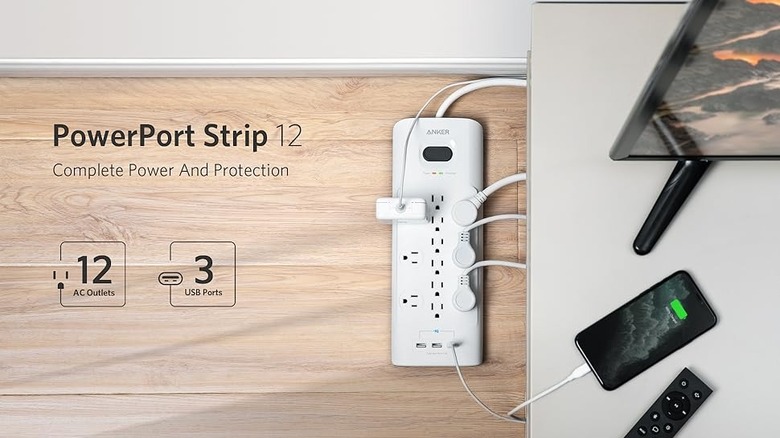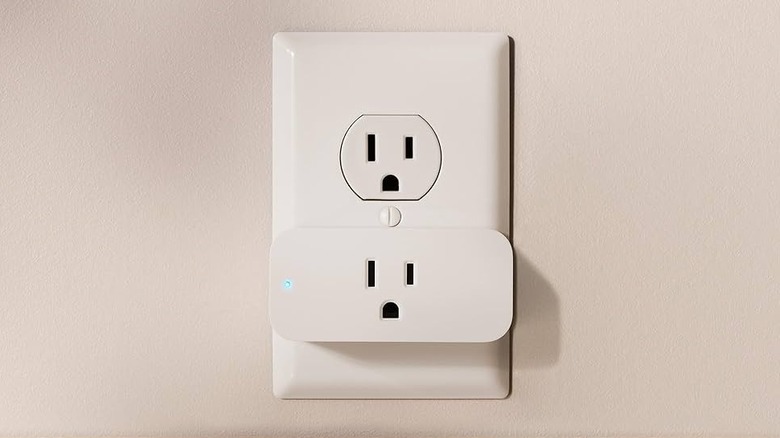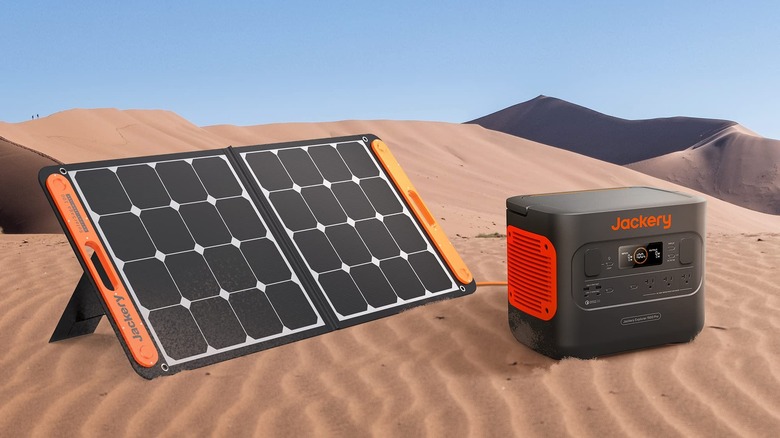10 Energy-Saving Devices That Could Help Cut Down Your Power Bill
We may receive a commission on purchases made from links.
High energy bills are the bane of nearly everyone's existence because we all need power (and lights ... and heat and cooling). Even if you have some number of solar panels on your roof, odds are you still get an energy bill each month. Even for consumers with whole-house solar, conserving energy can help stretch your saved-up sunlight hours even further.
Energy prices have increased every year since 2019, per Statista, and while the increases were smaller in 2024 than in previous years, no one wants to spend more money on their power bill. So how can you cut down on the costs without sacrificing, say, being able to see at night or enjoying a climate-controlled house? The answer is simpler and likely more affordable than you might think.
Many inexpensive smart home devices make life easier, but there's also something to be said for the energy savings. Whether you build out an entire smart home or pick and choose some energy-conserving tools for your setup, being strategic can help you save money and ease pressure off the power grid.
Although there are plenty of ways to save money on your energy bills, like being more conservative with your shower duration or washing clothes with cold water, using energy-saving devices is probably more palatable. Tracking your energy bill is the best way to determine the impact of your energy conservation efforts, and there are plenty of devices that can help in the endeavor. Plus, most of them are relatively affordable.
Energy monitor
It's hard to predict exactly how much energy you'll save with a specific device, and there are no guarantees. Still, understanding your usage is the first step toward saving electricity and money. An energy monitor is one way to work toward cutting down your power bill. Once you know which appliances use or waste the most energy, you can use them less or consider replacing energy-draining models with certified energy savers.
An energy monitor measures the amount of energy used by either a device or a circuit. The tool might plug into the wall, connect to your utility meter, or rely on data from your utility provider to report findings.
Some utility companies offer devices and monitoring that help you keep track of energy usage. For example, PG&E offers consumers a tool called Stream My Data, which monitors real-time energy usage in your home and even shows the costs as they occur. Not every consumer can use a utility-provided tool, however, because requirements can include specific rate schedules and meter types.
The alternative to your utility company's tool is an energy monitor that's separate from your electric meter. Some home energy monitors are relatively simple, like a smart plug that detects energy usage on a per-outlet basis. Those monitors start at around $20, while others range up to around $300. Our favorite home energy monitors are also compatible with your smart assistant, making it easier to track your usage and adjust your habits.
[Featured image by LindaInpijn via Wikimedia Commons | Cropped and scaled | CC BY-SA 4.0]
Smart thermostat
No one wants to be too hot or too cold at home, but paying more for energy is also not ideal. With a smart thermostat, you can make adjustments that may save you money in all seasons. A smart thermostat not only controls your home's temperature but is also programmable and functions remotely.
Most smart thermostats are compatible with voice assistant tools, and smartphone or tablet apps also give you remote control. With a smart thermostat, you can set your home to a specific heating or cooling schedule, turn on the HVAC while you're away from home, and track your usage and costs.
In all, a smart thermostat can save you money while upgrading the looks and functionality of your living space. Most old-school thermostats aren't much to look at, so upgrading the display is an additional perk to improving your energy usage habits. Eye-catching lighting features might even help inspire (or mock) you to turn the thermostat down a bit more.
Choosing a thermostat depends on various factors, like what kind of HVAC system you have, how much you want to spend, and what smart home technology you already use. Brands like Amazon and Google's Nest make smart thermostats and other smart devices for your entire home. For example, an Amazon Smart Thermostat is about $80 on Amazon and can be voice-controlled. With the right programming, you can even tell Alexa when you're leaving the house to begin a specific heating or cooling setting.
Home sensors
Home sensors are one way to take your home from basic to super-smart. While many smart devices can talk to one another (such as the thermostat connecting to Alexa), sensors allow your home to glean more information about what's happening and then make adjustments that save energy. Many popular home automation systems come with sensors and other tools that help reduce your energy usage and make life more convenient, or you can buy them separately.
There are tons of ways to use home sensors to save energy. For example, sensors placed around your home can detect temperature, moisture, smoke, and more, and correlate with specific processes you program into your smart device. Motion sensors are one way to automate your entire home, largely because you can customize chain reactions based on variables. For example, a sensor can detect when a window is left open and delay the HVAC system from kicking on until someone closes it. Or, a sensor could tell you when the door is open, with an alert that doesn't shut off until the door is closed.
These types of sensors can help reduce strain on (and energy usage of) your HVAC system, but there are other ways they can save energy, too. For example, a motion sensor can turn lights on when you enter a room and shut them off once you leave. Kasa Smart's Wi-Fi motion sensor switch costs around $30 and offers a hands-free way to manage indoor lighting.
Smart blinds
Putting blinds on your windows is a simple and effective way to save energy in cooling or heating costs, depending on the season and weather. Smart blinds could conserve energy even more because they can be programmed to adjust at various times of day. Beyond set schedules for the opening and closing of blinds, you can also use a voice assistant to adjust the blinds as needed.
Smart blinds are also an affordable yet luxurious-looking way to cut your energy use and, therefore, your power bill. Window coverings can reduce heat gain by around 45% in the summer, so you might be able to cut your cooling costs in the summer. During winter, opening the blinds to allow sunlight in can help warm up a room, reducing your heating costs, too. Curtains, on the other hand, can help with insulation, but blocking sunlight can also mean you'll use more energy for lighting than heating and cooling.
The energy savings from installing blinds might not drastically lower your power bill, but you'll likely notice a near-immediate difference in how well your home retains its temperature.
For maximum energy savings, consider other window treatments like curtains or even exterior awnings; an exterior awning can drop your heat gain up to 77% on windows that face west. Check your compass, then try your hand at installing window treatments and see how it impacts your power bill.
Heat sensor
If your home takes a lot of energy to heat and cool, you might have more issues at play than what technology you use. However, there are some tools to help determine where the energy loss is happening so that you can start remedying the issue. One tool I've used is a heat sensor that shows the relative temperatures of whatever you point it at. A thermal camera is fun to play with and can also reveal energy secrets.
With our thermal camera, we can see areas around our doors and windows that are cooler than the surrounding area. Those cold spots indicate energy loss because of air seepage, so insulating those areas with weather stripping could save both energy and money.
Infrared cameras aren't cheap, so shop around before investing in this piece of technology. However, if a $200 device helps you figure out where to insulate your home or pinpoints which windows need replacing, it's well worth the price tag. Some infrared or thermal imaging cameras also show where moisture is coming into your home, which helps you identify energy leaks and reveal potential health risks like mold.
The most convenient way to use a thermal imaging camera is finding one that plugs into your device. For iPhones, check out a device like the Topdon Thermal Camera for about $230. For Android, the plug-and-play Hti-Xintai Thermal Camera might be a good option at around $180.
Smart light bulbs
There are a few things you need to know before buying smart light bulbs – like the fact that they are more expensive upfront than standard LED light bulbs. However, smart light bulbs are often feature-packed and can do more than save energy. Smart bulbs are generally programmable, so you can set routines where the lights turn on, dim, and turn off at specific times.
With smart sensors, you can also set your lights to turn on or off based on activity in certain areas. Plus, you can schedule vacation programs that make it look like someone is home when you're away. In addition to using LEDs, which use less energy than incandescent bulbs, smart light bulbs tend to last longer than standard bulbs, too. An LED bulb can last up to 25 times as long as an incandescent bulb, and for most consumers, that more than justifies the higher upfront price.
Many brands sell smart light bulbs, and Amazon Basics' smart bulbs are around $10 each and come equipped with color-changing, dimming, and preset features. You can also sync your light bulbs with Alexa to control the settings via voice command or the app. Since smart light bulbs use LED tech, they could save you around $225 per year in energy costs. Plus, forgetting to turn the lights off will be a thing of the past if you set a program for your bulbs. Being able to turn them off remotely helps with savings, too.
Dimmer switches
Dimmer switches might not be the most exciting energy-saving technology, but they are a logical and money-saving option. While some areas of your home probably benefit from super-bright lighting, other spots could use dimmer lights and still be functional. A dimmer switch means you don't have to choose between on or off settings, and it allows you to use less energy with lighting that adapts to your needs. Away modes, remote controls, and fading on/off settings are just a few features of popular dimmer switches.
In combination with smart bulbs, dimmer switches can customize your home lighting even more. But even on its own, a dimmer switch gives you more control over the lighting and how much energy it consumes. A dimmer reduces the energy flowing to your light bulb, which means you can cut usage and costs by dialing down. An entire bank of dimmed lights might take the same amount of energy as a single bulb at full power, but with a better overall ambiance.
A dimmer switch from Amazon Basics costs about $21, although it's only compatible with the Alexa smart home system. Kasa Smart's dimmer switches, on the other hand, work with Google Home, too, and cost around $23 each.
Although most energy-saving devices are easy to use, there are some technical requirements involved in installing dimmer switches. Make sure you read up on how to install them or consider hiring a professional for the job.
Power strips
Back in the day, consumers would use power strips — aka surge protectors — as a method of protecting their computers and other electric devices from potential power surges. However, power strips also help cut off the power drainage from various devices and appliances when you're not using them, but they're still plugged in.
Vampire appliances, as they are known due to their passive energy drain when turned off, can create a baseline energy usage that you might not even notice on your bill. Cutting that down could reduce your energy costs across the board, and it's simple enough to implement some smart tech strategies to get rid of these vampires.
Using power strips for your computer, device chargers, TV, and gaming system ensures that these devices aren't drawing power while turned off. Flipping the switch cuts off power, so nothing is left in standby mode when you don't need it — like when you're heading to bed or out of town.
While choosing Energy-Star-rated appliances is a smart first step, power strips and even smart plugs can help cut off those vampire devices before they have a chance to drive up your energy bill.
While the Anker surge protector/power strips I bought for my household are no longer available on Amazon, a newer version is available for about $35 and includes 12 outlets, one USB-C charging port, and two USB charging ports (my apparently retired version has USB only).
Smart plugs
Similar to power strips, smart plugs can cut off your energy-sucking vampire appliances and devices, but without the need to flip a switch. With smart plugs, you can tell your voice assistant to turn off power or set a schedule so certain outlets shut off when you're normally finished using those devices. Stopping idle devices from drawing power when you don't need them can go a long way toward reducing your power bill.
There are also many creative uses for smart plugs, from monitoring your non-smart appliances remotely to enforcing screen time limits for kids to ensuring all your household's devices are charged when needed. Smart plugs can also replace a power strip and are handy for spots where it's hard to manually unplug or flip a switch.
Make sure to read your smart plugs' ratings, however, because you may not be able to plug a high-power appliance, like a refrigerator, into a smart plug and run it because of the power load limits.
I like Kasa Smart's plugs. They work with Alexa, Google Home, and IFTTT — plus, each is only around $5 on Amazon. These plugs are rated for 15 AMPs, which might be enough to handle a refrigerator at peak usage, but Kasa Smart specifies they are only for appliances up to 12 AMPs.
Either way, read the fine print before buying smart plugs for your bigger appliances to avoid any unfortunate surprises when you plug them in.
Solar panels (and batteries)
Home solar panels may not always be the best choice due to costs, space constraints, and the amount of sun your roof gets. Even if you have solar panels on your home, it's still possible to receive high energy bills. However, portable solar chargers can help you avoid running up the electric bill at home while keeping all your essential devices charged.
Even a handheld solar-powered phone charger can keep you from needing to plug your phone into the wall, especially if you have a long commute during daylight hours. With larger solar panels, you may be able to power other devices at home or charge smaller appliances like hair trimmers, milk frothers, and even blenders. I find battery backup invaluable when we get inclement weather, since our power often goes out during heavy rain or snow. Adding solar panels provides an off-grid way to add more usage hours without relying on your local electrical authority.
Although I wound up with an off-brand portable power station thanks to a sale I couldn't pass up, Jackery's solar generator bundle had been on my wish list for a long time. Jackery's 200W solar panel and 1,070Wh capacity portable power station seemed more than sufficient for my household's electronic usage (I get around seven hours of PC run time — with two monitors — on a 518-watt system), but results will vary based on how much sun your panels can collect.
